In episode 137 Dr. Jill interviews Judy Converse, RD, a renowned nutrition expert. In this episode, they discuss practical tips for improving pediatric gut health and managing ADHD. Learn about the crucial role of nutrition in children's health and discover simple yet effective ways to support your child's gut health. Don't miss out on this informative episode! Make sure to hit the subscribe button and turn on notifications to never miss a video.
Key Points
- Many children with chronic constipation or mood/focus issues have underlying bacterial or fungal dysbiosis that benefits from treatment
- Children with chronic constipation may benefit from magnesium citrate, vitamin C and treating underlying overgrowth of yeast
- ADHD may be associated with poor gut health and malnutrition – keys are making sure your child is eating enough, adding high potency fish oil and checking iron, zinc and copper levels
The Guest – Judy Converse, RD
Judy is a licensed registered dietitian/nutritionist with a Bachelor’s degree in Food Science and Human Nutrition. She also holds a Master’s degree in Public Health Nutrition. Judy has authored several books and lectured widely on nutrition assessment and strategy for chronic conditions in babies and kids, including autism, ADHD, growth and feeding concerns, picky eating, food allergy, reflux, constipation, Crohn’s disease, mood and conduct disorders, and more. She began her practice in 1999 to help children thrive in spite of a chronic condition.
Her practice is functional nutrition focused and has been situated within the office of Flatiron Functional Medicine since 2014.
Related Links
- https://www.drjillhealth.com/product/ultra-high-potency-fish-oil-key-lime-16-oz/
- https://www.drjillhealth.com/product/ther-biotic-children-s-chewable-60-chew-tabs/
- https://www.drjillhealth.com/product/activated-zinc-60-caps/
Dr. Jill
Dr. Jill Carnahan is Your Functional Medicine Expert® dually board certified in Family Medicine for ten years and in Integrative Holistic Medicine since 2015. She is the Medical Director of Flatiron Functional Medicine, a widely sought-after practice with a broad range of clinical services including functional medical protocols, nutritional consultations, chiropractic therapy, naturopathic medicine, acupuncture, and massage therapy. As a survivor of breast cancer, Crohn’s disease, and toxic mold illness she brings a unique perspective to treating patients in the midst of complex and chronic illness. Her clinic specializes in searching for the underlying triggers that contribute to illness through cutting-edge lab testing and tailoring the intervention to specific needs.
A popular inspirational speaker and prolific writer, she shares her knowledge of hope, health, and healing live on stage and through newsletters, articles, books, and social media posts! People relate to Dr. Jill’s science-backed opinions delivered with authenticity, love and humor. She is known for inspiring her audience to thrive even in the midst of difficulties.
Featured in Shape Magazine, Parade, Forbes, MindBodyGreen, First for Women, Townsend Newsletter, and The Huffington Post as well as seen on NBC News and Health segments with Joan Lunden, Dr. Jill is a media must-have. Her YouTube channel and podcast features live interviews with the healthcare world’s most respected names.
The Podcast
The Video
The Transcript
137: Dr. Jill interviews Judy Converse, RD on Practical Tips for Pediatric Gut Health and ADHD
Dr. Jill 0:12
Hello everyone! Welcome to another episode of Dr. Jill Live. I'm super excited to have a longtime colleague and friend, and just someone I love and respect, here today. I'll introduce her in just a moment. If you've missed any episodes, you can find them all on my YouTube channel, Stitcher, iTunes, or anywhere you listen to podcasts. Please stop in and leave a review that'll help us reach more people. Any other resources that you like, you can find on JillCarnahan.com.
Dr. Jill 0:40
Today I have Judy Converse. And I'm super, super excited to have her here today. Let me just introduce you, and then I'll tell you little fun personal bits about how we know each other. Judy is a licensed registered dietitian/nutritionist with a bachelor's degree in food science and human nutrition. She also holds a master's degree in public health nutrition. Judy has authored several books and lectured widely on nutritional assessment and strategy for chronic conditions in babies and children, including autism, ADHD, growth and feeding concerns, picky eating—sound familiar, parents out there?—food allergy, reflux, constipation, Crohn's disease, mood, and conduct disorders, and much, much more. She began her practice in 1999 to help children thrive in spite of chronic conditions. Her practice is a functionally nutritional-focused practice. And she's been with me in the office, of Flatiron Functional Medicine, since 2014. I can't believe it's been that long, Judy.
Judy Converse, RD 1:33
I know, I know. It's hard to believe.
Dr. Jill 1:37
Welcome.
Judy Converse, RD 1:33
But anyway, thank you. Thank you, Jill. This is really fun. I'm glad we're doing this.
Dr. Jill 1:41
Me too. And you are such a wealth of knowledge. I've been wanting to have you for a while. And just a little personal tidbit then we'll go into stories. We were joking right before we got on the call. We've done Christmas parties together and all kinds of stuff. We haven't skied yet, but that's on our agenda. We have to go skiing together. And we were joking before we got on. This Christmas, we had little games after our dinner, and it was “Who's the most likely to… ?” And I was asking, “Do you remember what we picked for you?” And there were multiple different cards. I think you got: “Most likely to ask for directions.”
Judy Converse, RD 2:12
Yes, probably.
Dr. Jill 2:15
It tells us your nature. We were talking about men and women and they're asking about tying the knot and comparing spouses. And I think you gave me the one: “Most likely to own crayons.”
Judy Converse, RD 2:24
Right, right. Always the coloring, right?
Dr. Jill 2:27
Yes. So I love that, and I love and appreciate you so much. We're going to dive into kids, so if you're parents out there, or if you're grandparents out there, or if you're listening and you have kids with either picky eating or some sort of mood or behavioral disorder, so much of this starts in the gut. We're going to go from the gut to what to do about it and the mood, and I'm going to let Judy really educate us. But before we do, Judy, I would love for you to tell whatever you're comfortable with about your story. How did you get into being a registered dietician? You're functional medicine trained and certified. How did this journey start?
Judy Converse, RD 2:59
How did it start? I was interested in nutrition a thousand years ago as a kid in high school. The original story is that I had an older sister who declared that she was going to become a vegetarian. Now I'm older, so I'm going to really date myself. This was in 1971, and she told my parents she was going to be a vegetarian, and they were horrified. That was not a thing, okay. I'm quite a bit younger than her, but I remember going, “Why would anybody do that?” That just got me curious about nutrition and food. I started reading [the book], Diet for a Small Planet, and all this stuff back through the 70s. This is way back. And I just carried that through, did my undergrad degree in human nutrition and foods, and loved it. At that time, there weren't a lot of different kinds of jobs for dietitians, so I wavered off. I did a job for a while; I actually worked in a research lab under a Nobel laureate in a neurophysiology lab, briefly as a lab tech. I was like, “Do I want to do research? What do I want to do?” And I just decided: “No. I want to be around people, working more clinically or in community.” So, I did this public health—master's. And that was what the path was. And then, when I became a mom, my baby had enormous challenges. He's a young adult now. But we weren't getting any help, and I was really baffled. I thought: “Okay, who are the people who are helping these moms and these babies? What's happening?” I could see very early that this had a lot to do with his gut and his immune system. Again, this is quite a while ago. There just wasn't really anywhere to turn. So, I just dove in, and gradually, that blew up into my practice, and parents started approaching me. I mean, I never planned to do this when I trained to be a dietitian.
Dr. Jill 5:10
Wow. The best journeys come in the way of our own experiences that drive [us] because there's nothing like us going through any of our own issues or children or parents or illness in our lives. I always say that so much of what I learned I could have never gotten from a textbook, but I learned it on my own journey, right? So you had such a parallel journey. And I just want to say publicly: You are brilliant in your field. You've written books about ADHD. When I first came to Boulder, it wasn't too many years after that we met. I had such a great respect. Nowadays popping up [are] nutrition courses online, weekend courses. [There's] nothing wrong with that to get people interested. But the kind of degree and education that you have, say a baby is in the hospital back in the day, you would be able to help the parents even do other types of nutrition. So I loved your knowledge based on a really broad level, but then you really honed in, and you're always so practical. One of the other things I always saw that I loved is that so often when we do elimination diets, we're restricting, restricting, restricting. And sometimes that needs to happen in a severe Crohn's [case] or a kid with severe issues or allergies or eosinophilic esophagitis; that restriction may be essential for life and for repairing the gut. But what I always loved about when I'd send kids to you is you would try to get them to eat more foods versus less.
Judy Converse, RD 6:21
Always! You know, kids are kids. They want to be kids. One of my mottos is that your kids get to be healthy, first of all—I mean really healthy. And that's normal. That's my norm. And then the other thing is that kids should be able to run into, like, a blue cupcake, and it's okay. You know, if they eat, they're going to eat junk. And it's not a way of life, but when they do, it shouldn't blow their heads off and make—
Dr. Jill 6:58
[Inaudible]. Yes, exactly. When we first see them, it is a life-or-death [situation] where we need to restrict to heal the gut, so there's nothing wrong with that either. So just to say, if you're listening out here, first of all, say who you are, tell us where you're from, and put in your questions. And even if we don't get to all your questions today, Judy and I can both go back. I want to be sure to get you the opportunity. So be sure and throw your questions in if you have kiddos with difficult situations. Let's start with the gut because we all know so much of this begins with the gut. Tell us a little bit about the framework. Again, you experienced this with your own child when he was very young. Why might someone who presents with constipation as a child or maybe even reflux as a baby or some of these things that are just treated with medication, very, very young, unfortunately, actually be a bigger issue and affect the brain and everything else? Just give us a brief overview of kids and guts.
Judy Converse, RD 7:46
Oh my gosh, yes. This is such a big, big topic. My hope, and I think this can happen, is that this just continues to open [up] in research and practice because it's really everything—everything leads to gut. So yes, those tools being given so early, those reflux medicines, and all these things, they redirect the evolution of that gut microbiome, right? Jill, you're the expert on this. And we're all learning about that. The way out when kids start running into trouble is to go fix that, basically. How much of a rewind can you do to repopulate and reestablish a healthy gut biome, remove inflammation, remove toxins, help the gut do its job, and let it move through it? Yes. So that's a really big deal. A lot of kids with ADHD actually have a candida burden. I know a big story for you in your practice is fungal dysbiosis, right? So you have these species in there. That is common. I find that more commonly in kids with ADHD, and I think there's some data on that. I know we've posted this little ADHD course that I've got for parents. Fair warning: It's a lot. It's a lot of information. It's a little bit of a fire hose, but I created it because parents are asking for the help. And there's a lot in there—but I think I've got a citation in there on fungal dysbiosis happening more often in kids with ADHD, and I think that's no surprise—and all that you know about how that can affect mood, focus, brain fog, and even create constipation. What I observe is that kids with fungal dysbiosis tend to have a really big, firmer stool, and then they get stuck on MiraLAX. So there's like one drug after another, and that too can affect behavior, and maybe you're familiar with that too, Jill. There's a whole community out there talking about: How does MiraLAX affect behavior and mood when you use it long-term in kids? So it can kind of snowball, and this is such a big topic, all of it, and parents are so interested. So it's great that we can get some good concrete [inaudible].
Dr. Jill 10:06
Yes. Oh my gosh, I love everything you're saying. So first of all, I just posted a link to Judy's course. I want to be sure and leave that—I'll make sure—and that's there for you. Judy put this together. So if you really want to go deep or your kid has ADHD—and we'll get to ADHD in a few moments more specifically—this all connects. Second, our doctors are doing the best they can, but they don't have answers. They're not trained to say, “Well, is there dysbiosis?” In medical school, we do not learn how to do stool microbiome testing or organic acid testing. That was outside—after postgraduate—my education. And I do that every day now to look at the gut, and so do you, Judy. But we aren't trained that [way]. So if you go to your regular MD pediatrician, they're going to have tools in their drugs. There's nothing wrong with that, especially in an urgent situation. But [regarding] MiraLAX, they wrote about ethylene glycol, which is antifreeze; it's in MiraLAX. So you're giving your child a dose of ethylene glycol. Again, there's no problem [when it's used] temporarily [for the] short term, but there are a lot of other things. I also love that you talked about candida and fungal dysbiosis. For those of you listening, candida is a yeast. It's super common in all of our bodies, but it can overgrow. It can get systemic and cause issues. In my own journey [of] healing from Crohn's, it was a massive issue. Unfortunately, doctors aren't really taught to look for that either because there's not some easy diagnostic test. When I'm testing, we do organic acid stools and blood antibodies, and even if all of those could come back negative, someone could still have a fungal burden. What symptoms or things would you look for in a kid that you suspect with fungal dysbiosis?
Judy Converse, RD 11:33
Yes, great question. Really, I want to applaud what you're saying about the position doctors are in. Plus you guys don't have a lot of drugs to treat a fungal dysbiosis. And you only want to use them when you really, really have to, right?—because you don't want to engender resistance to that stuff. But luckily there are all these other possibilities you can tap [into]. But what does a kid look like with fungal dysbiosis? They're usually constipated. They may be MiraLAX-dependent. There's usually bloating [and] gas. They love sweets, of course, because basically microbes that populate the gut—they eat first. They eat what we eat. They eat, and then they leave their toxins or supportive nutrients and [other] things behind. So those are really typical. You might see some of the more outward signs that I think if you're wondering as a physician, “Am I supposed to prescribe for this?”—you're looking for bigger signs. Right, Jill? You're looking for thrush—something white coming out of an orifice somewhere. I have a client I've worked with for years when he was little; now he's a young man. He had such a terrible fungal dysbiosis when he was about three or four [years of age]. And at the time, a lot of this was even, well, of course, newer. We couldn't get him on a Diflucan prescription. I was really hoping he could. And it persisted and persisted, and over the years, he actually had thrush coming out of his ears, and he lost his hearing. He's hearing impaired and has hearing aids now as a result of that. It's kind of a blind spot, I think, and it's really tough. But looking for those really big outward signs would be white material coming out of really itchy areas on the skin or that ringworm rash, the flattened nails. Some of that may or may not already be in play. But for sure, I'm seeing these bloated kids who are constipated [and] who love to have a white, starchy diet; they're picky, they don't want to eat other foods, and they tend to go bonkers when they eat sugar. You've probably seen this too, Jill: There are published clinical anecdotes, case reports, in adults where there's a measurable “above the legal limit of alcohol” in their blood. It's from a fungal dysbiosis. Have you seen [inaudible]?
Dr. Jill 13:57
Yes, it's called “the auto-brewery.”
Judy Converse, RD 13:59
Right, auto-brewery. Right. So I'm not aware that anyone's ever measured that in children, but I can imagine that it's possible because of some of the behavior, attention, and focus issues that happen based on what kids are eating. I've seen it.
Dr. Jill 14:15
Yes, so briefly, it's such a weird thing, but it actually exists. I have several patients in my practice that I've treated for it. And what happens is that the fermentation in your gut by yeast causes [the] production of alcohol—literal alcohol—that can change your blood alcohol limit. It's crazy because you can literally have above-legal blood alcohol levels so you can feel like you're drunk. And it's interesting, the prototype, what kids or adults look like with yeast often looks like either alcohol issues or hangovers because of the alcohol issues. So they might have headaches or foggy thinking—and again, this is maybe more [common in] adults—the bloating for sure. I look back, and I had Crohn's, I had breast cancer, and I probably had fungal dysbiosis from a pretty young age. I had the big old belly when I was five. I look back and I didn't think any of it, but I'm like, “Oh, she had dysbiosis.” I can see it in the pictures of me as a kid—it's so clear. And you're talking about that too. I also want to mention, mom, if you have fungal issues, if you have frequent vaginal yeast infections, if you are saying, “Oh, that's my symptoms,” when you give a vaginal birth, you inoculate the baby with whatever you have. So I often see [that] as I'm talking about the kid—the same with you—and you ask the mother and you hear the same symptoms. So it's not uncommon for that to actually be a common theme in the family—not because it's genetic, just because it's passed to the birth canal.
Judy Converse, RD 15:30
Right. As you know, at delivery, it's common to use antibiotics if mom has a group B strep-positive swab [taken] vaginally, if you have a C-section delivery, or if you get mastitis [while] you're breastfeeding. There are a lot of moments where antibiotics enter the picture in that early phase of our microbiome needing to evolve, and it's disruptive. What I have observed is these fungal dysbiosis features will persist for years after that in kids.
Dr. Jill 16:00
Yes, absolutely. So I love that intro because that's so relevant. So constipation is a common problem, and I just want to address that because a lot of parents are like, “What do I do if MiraLAX is bad?” What would you do for a kiddo who comes in with constipation? What are some alternatives?
Judy Converse, RD 16:17
Yes. Oh, my goodness. I do use the stool analysis tools like you were talking about, and we'll look at what degree of that is going on. And “Is there other dysbiosis in the same mix that needs more attention? What should we look at first?” Of course, as a licensed dietitian/nutritionist, I'm not prescribing medications, but I can use supplements. I can use herbal antifungals, and I will use those a lot. I'll match those to a child's stool study and what they can tolerate and what they're able to take by mouth, and I'm very gentle with that. When you look at protocols for things like SIBO or some of these dysbiosis protocols, they're pretty hefty when you're using herbs, and I'll dial that way down for little kids. Certain probiotics, I might choose to pair. But I will give them a part, like one in the morning [and] one in the evening. That's a common approach. One thing that I've got to mention—I don't want to get too far off track—is if kids have big constipation, I'm always eager to know if they're forming these opioid peptides from their diet, right?—if you're familiar with that. Peptides come from protein we eat. We digest protein, it turns into peptides, and then it turns into smaller bits called amino acids. But if you have leaky gut, like a lot of kids do, and you have a really picky diet, and all you're eating is milk, dairy, and meat food, those proteins can form little chunks, molecules that look a lot like opiates. And they can bind to nervous system receptors. It slows down the gut, slows down motility, makes big hearts. So I will be looking at that too. It's interesting; there's a whole bunch of literature on diet-sourced opioid peptides, but you don't hear a lot about it in practice. I have a lot of kids who end up in feeding therapy because they're so picky. The problem is [that], like opiate medications, these opioid peptides from foods can be really addicting. So there are scenarios where kids will not [eat]. I've had hunger strikes in my practice; I think the longest was nine weeks, and that was in a two-year-old—a 22-month-old kid. So the parents were just like… He just stopped eating because it's literally a withdrawal that they're going to go through. But for super severe cases—when I mean severe, I mean kids who keep going to the ER for cleanouts—that's what I'm going to put on the table. Like: “You might need a very strict elimination diet. Let's back up, clear this up, get this gut working normally again, and then we'll see if you can reintroduce those proteins.”
Dr. Jill 19:13
Oh, so good. And those are like the casein, casomorphins, and gluteomorphins that—
Judy Converse, RD 19:17
Casein, gluten, pea protein is a culprit here too. So that's in things like—I don't want to call out brands because I don't want to make anybody unhappy—if you have a pea protein concentrate in a milk substitute. A lot of people used to be using soy milk, that's a biggie also. Whey protein can do a little of this too. Usually, I'm looking to use something like a collagen protein source, or I will sometimes go to an elemental protein, which is just the free amino acids, and there are different products for that. And pretty quickly that can resolve constipation along with tackling that dysbiosis—that can take care of it pretty quick. But your kid is going to feel really crabby at first because they're very used to that chemistry in the brain of having the—
Dr. Jill 20:03
Yes. This is so good, and you went right to the root. You didn't give magnesium, which we can talk just briefly about [inaudible] the symptomatic things. But I love that you went through. Let me just reframe this for everyone because this was so full of pearls: Number one, you go to the root if there's fungal dysbiosis or bacterial dysbiosis. If you're listening and don't know what that is, it's just an overgrowth of the wrong bugs in your colon, or it could be in the small bowel as well. And Judy's saying she uses herbs and [other] things to treat that root cause. The second thing is that you're saying certain foods, especially whey, gluten, dairy, and even pea protein, can actually cause a molecule that looks like morphine or looks like opioids in the child's body, and that can slow down the bowels. Just like if you took Vicodin or oxycodone after surgery, you have constipation; the same thing in the kiddos is happening from foods. So I just want to frame that for those of you listening. That can actually be a cause of this chronic, severe [dysbiosis]. And what you mentioned is that some of these kids, as we know, have to go to the hospital to get disimpacted or treated. So I love that you framed that. I Love that you went to the root cause. So if it's severe, you might need to go to some of these kinds of things. Let's talk about practical things. Instead of MiraLAX, what might you use to help move the bowels? Do you ever use laxatives, [inaudible]?
Judy Converse, RD 21:10
Yes. I do, yes. I love magnesium citrate. And of course, you have to dose that very thoughtfully for children because they're smaller, and too much can be too sedating and can affect heart rate in a way that you don't want. It would be unusual for me to go above 300 milligrams for a child. I love CA oil, caprylic acid, just as an oil, which is one of the medium-chain triglycerides. It has some antifungal properties, but it's also a good laxative. I love vitamin C. Everyone's tolerance is a little different for that, right? So you can give a child, say, 200 milligrams at a time, maybe at first a couple of times throughout the day, and build it up to see what loosens stool for that child [or] helps them pass stool. What else are my favorites? I often use digestive bitters. These are little tinctures—they usually taste good—that have a blend of herbs in them that help you make your own digestive juice, stimulate stomach acid, and things like that. A lot of times, that's where this starts, especially if kids have used reflux medicine and their digestion is kind of in shut-off [mode]. I had one child come into my practice, age six; he'd been off reflux medicine for a while when I met him. But he had been given it from birth all the way up through age five, nonstop. He was so constipated, and he was stunted, also. He'd had a broken bone. So that really affected his digestion and his biome, and it sort of ground everything to a halt. So kick starting that with some bitters and things, that's a trick I'll use a lot. It's very gentle.
Dr. Jill 22:56
I love this because, with a kiddo, you wouldn't want to give betaine because they don't know how to tell you if anything's wrong.
Judy Converse, RD 22:59
No. And please don't do that because you definitely can't open those capsules—it's full of that stuff.
Dr. Jill 23:07
We're talking about stomach acid, which adults can take in an appropriate setting but kiddos, no. And so I love, Judy, that you're addressing that. Just to be clear too, PPIs given at birth, given right after birth, or given for reflux shut down the production of acid in the stomach. There's a protective mechanism. Acid protects you from an overgrowth of bacteria, so you're actually making it more likely that there's an overgrowth of bacteria or yeast. It also helps you break down proteins and absorb minerals, which is why this kiddo probably had bone issues because he couldn't absorb minerals. Again, in severe cases, sometimes these meds, you can't avoid them and temporary use is fine. But there are other ways to go to [the] root. So I like that you addressed [those things]. Someone asked, because we were talking, [about] what to do with kiddos who can't tolerate formulas or breast milk. I think you mentioned some of those. What are some good alternatives to—
Judy Converse, RD 23:54
There are great alternatives; I'm impressed. When I was a new mom and I had the same scenario with my baby, they wanted me to take him off the breast and do other stuff. There are elemental formulas that can work because they, again, will shift what the microbiome is trying to do. Usually, I'll use them with certain probiotic tools, usually Bifido strains, because those formulas don't encourage the helper microbes. They tend to encourage problematic microbes, and we don't want that at that age. But the formula itself can really be a help. I also love—there are some European formulas. There are organic goat milk formulas. I don't know if we want to get into naming brands here, but there are some good products out there that are goat milk formulas. There are partly hydrolyzed whey protein formulas, which are good. You can now get formulas that use lactose as the main carbohydrate, which is great. That's what's in breast milk—lactose. It's the milk sugar instead of stuff like corn syrup. Often one of the problems that I'll see is it's not the protein source in the formula, it's the carb source that's disruptive because it's—
Dr. Jill 25:13
And the corn is usually genetically modified, so it has roundup [and] glyphosate. In these kiddos, the amount, even if it's small, [due to] their body size, it really is a big deal.
Judy Converse, RD 25:20
Yes. It's going to disrupt that microbiome, and that's going to cause trouble. If we're talking about infancy and feeding early on, the microbiome is so important to help you start digesting food and teaching the immune system what's what, so to speak. So that's where I'll look for formulas that are less disruptive. There are some that use tapioca maltodextrin instead of corn syrup, which is often preferable to use—the tapioca source. So there are a lot of possibilities out there.
Dr. Jill 25:53
Perfect. And you introduced me several years ago to camel milk.
Judy Converse, RD 25:54
Oh yes, camel milk.
Dr. Jill 25:57
As you gave me the literature and stuff, it was pretty profound. Why is that a better source for some kiddos?
Judy Converse, RD 26:03
Yes, so camel milk is really interesting because the immunoglobulin—the immune protective proteins in it, which we all make in our own milk and every animal does, mammals do—those immunoglobulins from camels are much smaller, tinier, and apparently much better at penetrating viruses that might get in the gut or offending microbes that might enter the gut. They are apparently very helpful. There's interesting research on that. And the milk protein from the camel is a lot less allergenic than cow's milk, even goat's milk, and even sheep's milk, so a lot of people are interested in it. The caveat is that you can't give a baby straight camel milk because it's very different in terms of its calories and it's a lot higher in sodium, so it needs some adjusting. I actually have a camel milk formula recipe on my website somewhere, which you could find.
Dr. Jill 26:58
Oh good, we'll be sure and put that wherever you're listening. Judy, we can get that link and add it.
Judy Converse, RD 27:02
Yes, so if you really want to try it, you can safely try it. You can't give babies stuff that… You've got to make sure you're giving them equal or better value stuff if you're pulling out breast milk or whatever.
Dr. Jill 27:14
And maybe even more for younger kids—two or four or eight or whatever—who can't tolerate other kinds of foods. My question always was, “How do you milk a camel?”
Judy Converse, RD 27:23
I know. Apparently, there is one dromedary dairy in Colorado. There are one or two of them. Apparently, it's pretty hard to milk a camel.
Dr. Jill 27:32
I know, I started to laugh because it's so funny to imagine. So we talked about formula, talked about kids, talked about the gut. Oh—probiotics. You can talk specifics or strains—I don't care. What would be a few of your favorites for infants?—maybe infants; obviously, breast milk contains probiotics, but [for] very young children, and then maybe above the age of two.
Judy Converse, RD 27:52
Right, so for little babies, especially if they're struggling already with what looks like a [case of] SIBO, which we don't really talk about for babies, but I think it's a thing, this is my opinion. If you're seeing them very gassy, bloated, and uncomfortable, they have kind of too much spit up, or they're crying more than two or three hours a day, which is a lot of work—that's big calorie burning for a baby to cry that much—it's not good for them. All babies cry some, of course. I'm going to go simpler and pick a product that might have two, maybe three strains in it—maybe even one. And I'm picking out of the strains that so far, as far as we're understanding, are important for that early, early microbiome development. So it's going to be Bifido[bacterium] infantis or Bifidobacterium. It might be lactobacillus rhamnosus or salivarius or reuteri. And I'm going to keep it really simple. They don't seem to tolerate the big, multi-strain, high doses of probiotics at that point very well. And again, this is also new in terms of actual practice. But as kids get older and their diets are a little bit more diversified, I'm happy to reach for a bigger lens. I love the ProBiota HistaminX. It's one of my favorites right now to keep histamines at a dull roar—out of the picture. What else?
Dr. Jill 29:28
Yes, that makes perfect sense. I totally agree with you. Some of the new kids on the block are the spores, but I wouldn't do that in infants because we just don't have the data.
Judy Converse, RD 29:35
Right. I have not really seen yet: What is the thing to do with infants? So yes, I'm glad you mentioned that. I'm kind of sitting on the edge of my seat, waiting.
Dr. Jill 29:45
I agree, because I'm like, “Oh, we don't… ” I love it in adults, but yes, I would wait till, you know—
Judy Converse, RD 29:49
And another one, too: Akkermansia—same. I started using that in older kids who have low diversity, but I haven't seen what the scoop is yet on that with younger kids or babies.
Dr. Jill 30:03
Yes. So, for years I've been taught about probiotics and gut [health], and I always would say, if someone is able to get a strain of Akkermansia for a probiotic, they're going to be very, very wealthy because it's one of the most important diversity indicators—we call it keystone strains. Well, now there are. I was like, “Oh, Akkermansia!”—because for years I've been wanting to see that we would have something like that, and we do now, so you can get that as a strain. But definitely, they're new; we don't have a ton of long-term data. Let's shift. I know a lot of people are interested in ADHD, and this is an area of expertise. You have a course for those of you who didn't hear. There's a link at the beginning of here and everywhere you're watching it. If you want to take or look at Judy's course, we're going to link that here. But give us a platform [of]: How common [is it]? How much is it increasing in precedence?
Judy Converse, RD 30:46
Oh my gosh, right. So, this is a really good topic because there is such a big gap, really, in terms of what parents are interested in and: What is, sort of, the standard of care right now? A lot of kids in the US have a diagnosis. It's somewhere between six and seven million children who actually carry an ADHD diagnosis, and that's between the ages of 3 and 17. About two-thirds of them are medicated. So, the official standard of care for kids under the age of five is behavior therapy, and then over the age of five, it's behavior therapy and medication, or, once they're over five or six, the FDA allows you to just write [a prescription]. If you wanted to, Jill, you could just put a kid on medication without behavior therapy. So, there's no guidance, there are no protocols, [and] there are no standards around nutrition screening for these kids, which is really a thing because there's such a wealth of information that's evidence-based about how nutrition affects the brain. And it's not new, it's not fringe—it's very, very good evidence-based [information] out there. And I always love for parents to start with super simple things. We've talked about gut dysbiosis, which is a little bit more down the line.
Judy Converse, RD 32:05
Like you said, it'd be hard to get a stool test through your routine pediatric care, so what else can you do? One of the first things I look at is a kid's growth pattern. And usually, all seems well until a kid is absolutely shrunken and falling down to the bottom of the chart. But one of the most basic things I find is that kids who are struggling with attention/focus actually don't eat enough, and that can be especially true if they're on medication because that can depress appetite. And then that makes it worse. So, how can you tell? Well, first of all, obvious: Are they growing? Do they need new shoes, new pants? They should be growing. Another way to check if you're at the pediatrician is that, as far as their weight for age channel on their growth chart [is concerned], they should pretty much stick in the same zone, give or take 10 points. If they start to lose more than 10, 15, [or] 20 points, that's a possible growth impairment. And that's enough, even though it's not enough for your pediatrician to really say, “Eh, here's a problem,” it is enough. There's plenty of data to show that's enough to affect the brain and how kids start to focus and concentrate.
Judy Converse, RD 33:17
A kid's brain uses about twice as much fuel every day [as is the case for] you and me. We're just sitting here shrinking and getting old [laughing], but not you, Jill, because you've got all the levers pulled for functional medicine and whatnot. But as adults, we use a lot less fuel to just have a brain than a child. So, they need a lot of food. They need a lot of food and a sure sign is if they come home and they have huge tantrums, meltdowns, and then they finally eat something and they calm down. So, that's a typical easy sign, “Okay, I've got to do some more work with snacks or food or helping them eat during the day.” At school, a lot of kids don't like to [eat] because they're busy, they're socializing, so we always tackle that stuff. A second biggie is their height. Like, what's their height pattern on their growth chart? Same thing; if they're starting to waffle away, 10, 20 points, that pretty much describes they don't get enough protein, and you have to eat protein to make brain chemistry. You have to have protein for neurotransmitters, and then we'll look at that. So, that's super easy—low-tech, easy thing to do.
Judy Converse, RD 34:29
If you're moving [into the] next steps and you can get your pediatrician engaged, I love for kids to have iron screening, not just [for] hemoglobin, which is where they poke the heel or finger and look at hemoglobin. Hemoglobin is that carrier molecule for oxygen—really important. But if you ever look at the lab report for that—and you know, Jill, that the reference range is tiny—we have a tight tolerance for hemoglobin. The body doesn't like it to swing around. But if you look at the reference range for iron or ferritin, it's much bigger. So, there's this big area the body kind of plays with to keep iron balanced. If your pediatrician is willing to do an iron study where they look at the hemoglobin, the iron, and the transferrin, which is the carrier molecule that gets iron into the brain, that's so helpful for me as a nutritionist/dietitian. We can tailor: What food? Do you need a supplement? What form? Iron is huge for attention and focus. You need it to make and break down neurotransmitters like dopamine, which is the target neurotransmitter for stimulant medications, right? So, that's super simple. Again, I know [that for] a lot of pediatricians, it's tough for them to work these things into their models when they're very busy all day and they're seeing 40 patients a day, and they don't want to stop and write a requisition. Or, you know, how do they code that? But there are ways to do it if you can get it done. Very informative. And I always include zinc and copper in those if I can.
Judy Converse, RD 36:04
I can also order labs under my license, but usually, that means it's out of network and it's a little harder to get done. If your pediatrician's on board, that's fabulous. Zinc is also really important for the brain, for memory, and for mood, and you can talk all about that, I'm sure, right? And then copper—the ratio of copper to zinc in the blood is predictive of aggressive and volatile behavior, especially in boys. So, even though you might get normal labs back [where] you have zinc and it's in range and you have copper in range, the ratio of the two to each other really matters. So I always look at that.
Dr. Jill 36:40
So you're saying low zinc, high copper?
Judy Converse, RD 36:44
Yes, exactly. You need at least a one-to-one or even better ratio of these two minerals to balance brain chemistry. And there's interesting literature published on volatility, aggression, and violent behavior in adults, especially males, relative just to that ratio. This is typical: “Oh, my child's school placement, they're kicking him out. They're threatening his placement because he's been hitting other kids.” This is one of the things I want to look at.
Dr. Jill 37:16
I love that. And you know what's interesting? As we deal with dementia, and the other side of the spectrum, on older [adults], 60, 70s, 80s—60s is early and young, but it goes all the way up; early onset—coppers/zinc ratios, we look at them too. The brain—it's so critical to have these, right?—even in midlife, but it's more common on the spectrums. So great, great information about ADHD and where to start. Even looking at the growth charts [is] really practical. I want to encourage you, if you're a mom or a dad listening and you have a kiddo, be persistent with the pediatrician or find someone who will listen. I feel like, yes, maybe 20 years ago, we could expect to not be heard and you would have to find someone else, but more and more, I just feel like it's really important. And Judy's right, a lot of them are busy, and I want to honor that. But I want to say, if you're the mom, find someone who will listen, because there are doctors out there. And they don't even have to be functionally trained. I think more and more of the younger doctors are a little more open-minded, and I think that it's your right to get these things for your child if you want to know the information.
Judy Converse, RD 38:14
Yes, absolutely. Again, there's a great evidence base around it. We're not making this up as we sit here. Zinc has been clinically trialed with school-aged kids, with and without stimulant medications. The best outcomes were with zinc, and they were giving these kids 75 or 150 milligrams of zinc a day. So that's a lot.
Dr. Jill 38:37
That's a lot, yes.
Judy Converse, RD 38:39
Right? A kid's multivitamin is usually two [or] maybe three milligrams of zinc. And I wouldn't encourage parents to just go give their kids, you know, 75 milligrams of zinc a day. Yes, someone should help you with that. But certainly using 30 milligrams or 25 [milligrams] is reasonable.
Dr. Jill 38:58
Interesting. I want to tell you a little tiny tidbit of me, and you'll be like, “Oh yes, that makes sense.” When I was a kiddo, I probably had low stomach acid—hypochlorhydria. I had undiagnosed celiac [disease], so I was having pretty significant malabsorption. I also had an issue with B12. So [I had] many, many things underlying. And as you mentioned your sister [for example], [it reminded me of] when I was 14, I decided I didn't like meat. I didn't want to eat meat. I'm on a farm with steak and potatoes, and it was so bizarre when I went vegetarian at 14. Everybody thought I was crazy, and they didn't even know what a vegetarian was. So it's so similar. But looking back, you know what? My body, intuitively—I probably had really low zinc. Zinc also helps taste for meat. If you abhor [and] can't stand the taste of meat, that can be an indication of zinc deficiency. I look back at myself, and [I had] low stomach acid, so I wasn't absorbing minerals. And then, I didn't like meat, and it wasn't for any other reason other than I couldn't stand the taste of it that I went vegetarian. But I look back, and I bet my zinc was incredibly low.
Judy Converse, RD 39:50
Yes, I'm not at all unusual. Even in kids who aren't vegetarian, in my practice, they just don't eat great diets. And they're not necessarily eating a lot of foods that are rich in zinc, and that's going to be meat for sure. Or if they've had to use reflux medications, there you go. That will impair the absorption of zinc. They're not eating things like shellfish or pumpkin seeds.
Dr. Jill 40:12
Yes, it's something common. So what else do kiddos do? You've given us some really practical tips for parents looking for warning signs or things to do. What are interventions? How would you treat a kiddo? And let's say like 5-10. Let's say that age range of kiddos. What would you do for interventions?
Judy Converse, RD 40:30
Yes. Definitely, like I said, I'm going to make sure they're growing as expected and correct their total food intake. [I'll] give a family suggestions around: “Well, here's food you're going to need. And let's try this… this… this… throughout the day.” We troubleshoot how they can get lunch in at school or what to do after school for snacks. I'm always interested in those minerals like I said. I also will just give easy things to do at home. Magnesium is so important for nerve transmission, right? And a lot of these kids need calming, and that's a really easy thing to do. You can use an Epsom salt bath, [or] you can buy magnesium lotion. So we implement stuff like that. We just work on replenishing all these nutrients that your brain needs to run, and one of them is fuel—simply fuel. I'm also really interested in fish oils. So that's a popular thing. I invariably almost always find that kids need a lot, and that's what the data shows too. If you're talking about attention diagnoses or things like dyslexia or impulsivity, you need to be pretty high. If you're using some of these products that are made for kids, like gummies and things, and they have like 50 milligrams, that's way too low—way too low. So I'm like, “Okay, they can eat the whole bottle every day or you can buy a high-potency liquid.” And you have products in your store; online, you have good products for that. I use products too for my clients. I'll write up a protocol for them. But there are all kinds of liquids for kids anywhere from 800 to 1200, sometimes 2200 milligrams a day—mixed DHA and EPA—and those you need to use consistently. Parents will come back saying, “Oh, we sort of did it twice a week, a little.” Use it every day. You're going to literally be rebuilding the nerve cell membranes—the cell membranes in the brain. So it needs time and it needs consistency to work, and it can work. I have had families give me feedback as quickly as a week or two about that, especially things like dysgraphia, where kids' handwriting falls off halfway across the page and they go down to the bottom of the page and go back to the left margin. I've seen that change very quickly with fish oils, especially if you include vitamin E with that. There are all sorts of forms of vitamin E; they're called tocopherols. So I'll use a fish oil with mixed tocopherols, and that can pretty quickly help the eye-brain coordination. So [there are] lots of stuff that can be easily tried. The thing to remember, back to biome, if you're trying supplements but your kid's biome is really disrupted, they're not going to work as well.
Dr. Jill 43:27
Well, [this is] super helpful, super practical. One last question here, because I think it's so relevant. With these picky eaters, the ones that just refuse [to eat certain things], how do you help parents navigate the fear of the kid not eating or flying off the growth chart and yet getting good foods? Any kind of practical advice? It's a big topic, but how do you navigate the picky eaters when they really—?
Judy Converse, RD 43:50
It's so tough. It's so tough, Jill, honestly, especially if we have that opioid peptide chemistry in the mix, which is usually the case with the super, super picky eaters. I will say in my 20-plus years, I have had one patient, a child, who ended up as an inpatient for tube feeding. This was a five-year-old who had only had milk formula. Again, I'm hesitant to name products because I don't want anyone to get in trouble. But they had a common formula given to kids, which is milk and soy protein-based, and that was the only food that child ate for five years. That made that child very sick; their liver enzymes were all messed up, [and] they weren't growing. So we began to work on stepping back. That was hard. Those parents were fabulous; they were so grounded, and that's the hard part. So what advice do I give parents? I encourage parents to become—it's really hard—as dispassionate as you can, and detach from the tug of war with your kid. You're never going to win. You're never going to win. I coach parents on what to tell their kids and depending on the kid's age and their cognitive ability or status, don't explain. They don't need it. Don't give them information they don't need. I really encourage parents to be comfortable and confident in laying down the rules. It's not a conversation; it's not an argument; it's not a debate. We all are guilty of it as parents where you've got a three-year-old and you're going back and forth about—
Dr. Jill 45:39
You're arguing, and you're begging and pleading, right? And you're like, “That doesn't work.”
Judy Converse, RD 45:42
It's never going to work. You might as well argue with your cat; it's never going to work. And I use humor a lot too. It's because you've got to sit back. You've just got to give yourself a break. That's really the gist of it: Helping parents feel confident, safe, and comfortable making these very firm boundaries because it is really hard when your kid has that chemistry and they're very, very picky. They are going to fight, be difficult, and campaign.
Dr. Jill 46:18
And your doctor might say, “Give them formula and MiraLAX and call me in a couple of months.” And they're not going to be… maybe, maybe. But I love this because what you're doing is empowering those parents out there who are struggling. I think as parents, we're not given the manual, right? Detailed information is not readily available to every person who's having a newborn. So I think a lot of parents, and I'm sure you know this so well, feel afraid. “What if I do something wrong? What if I say the wrong thing? What if I set a boundary or give them a diet that could hurt them?” So you're instilling the confidence that they need to do the things [necessary so] that their kid can be the most vibrant version of themselves.
Judy Converse, RD 46:53
Right. That's so true because, yes, all the kids are in there, and I've worked with all kinds of kids with all kinds of developmental disabilities and cognitive issues. They're all so in there. I hate to see them given the short end of the stick, whether it's in the school setting or wherever. People assume there's nothing going on in there [pointing to the head].
Dr. Jill 47:18
Oh, I love that! And you have; you've seen some of the most amazingly difficult cases, and again, that's why I love what you do. If people want to find out more, we're going to link to the ADHD course, but where else can they find you if they want your book? Tell us a little bit about where to find you.
Judy Converse, RD 47:32
Well, thank you, yes. My website is nutritioncare.net, and there's a pretty deep blog up there. There are over a hundred blog entries. There are recipes up there, and all the recipes are geared toward kids who can't eat anything [due to] multiple food allergies. Yes, nutritioncare.net is a good place to start; it's also on Facebook, of course, and Instagram, and all those things. On my site, there's a little section for books and things. There are a few eBooks I've put up. There's a couple of print books. So there are lots of resources there, and I'm always trying to make more.
Dr. Jill 48:08
You're very good at that. You're great at educating, which is why I'm so excited to have you here. Judy, thank you so much for your knowledge, your wisdom, and all of your heart and soul that you've put into this over the years. If you want more information about Judy, go to nutritioncare.net, right?
Judy Converse, RD 48:22
That's it, right. And thank you, Jill, this was fun!
Dr. Jill 48:25
It was amazing! Thank you all for another episode, and we will be back again next week!
* These statements have not been evaluated by the Food and Drug Administration. The product mentioned in this article are not intended to diagnose, treat, cure, or prevent any disease. The information in this article is not intended to replace any recommendations or relationship with your physician. Please review references sited at end of article for scientific support of any claims made.




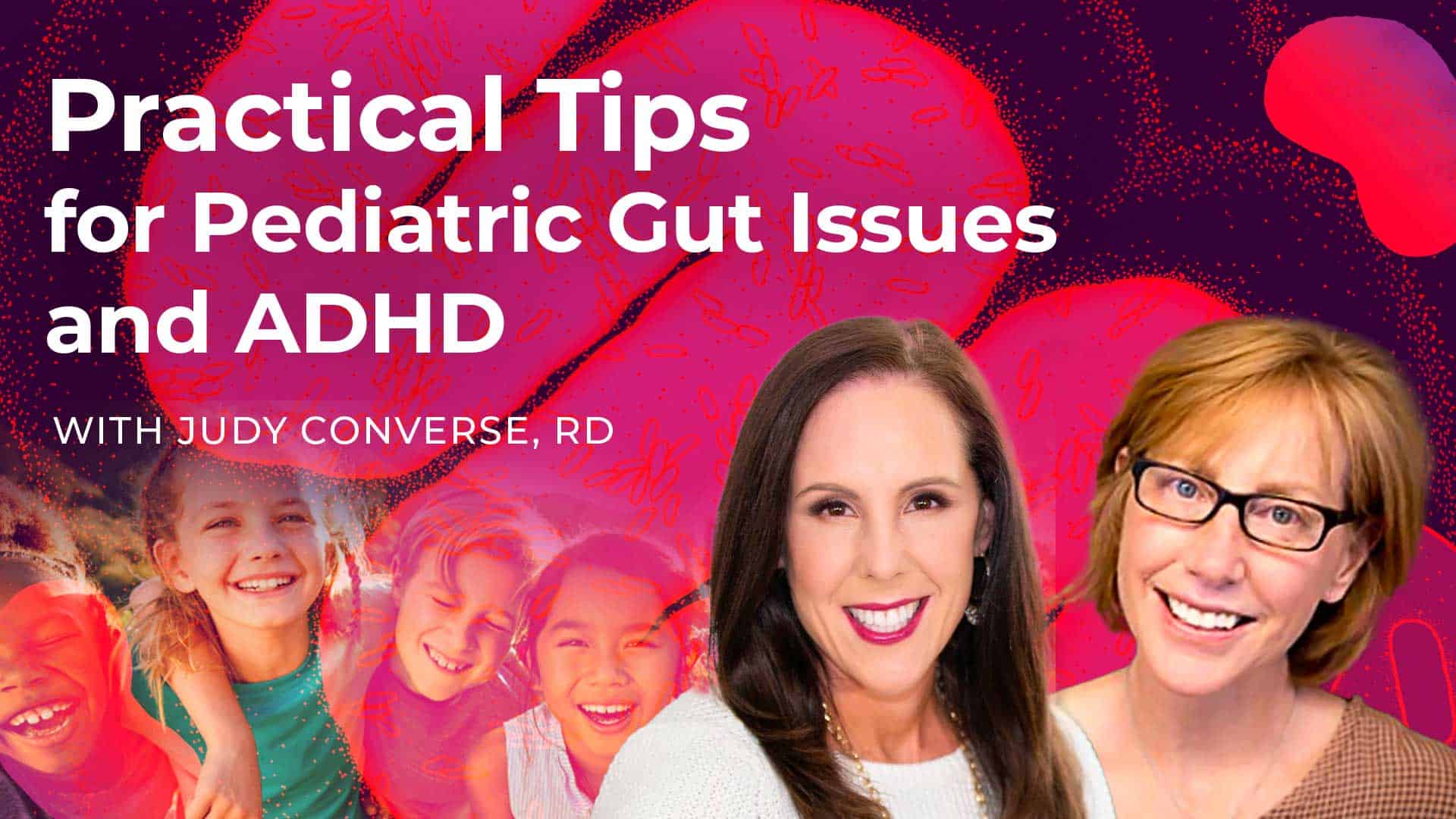
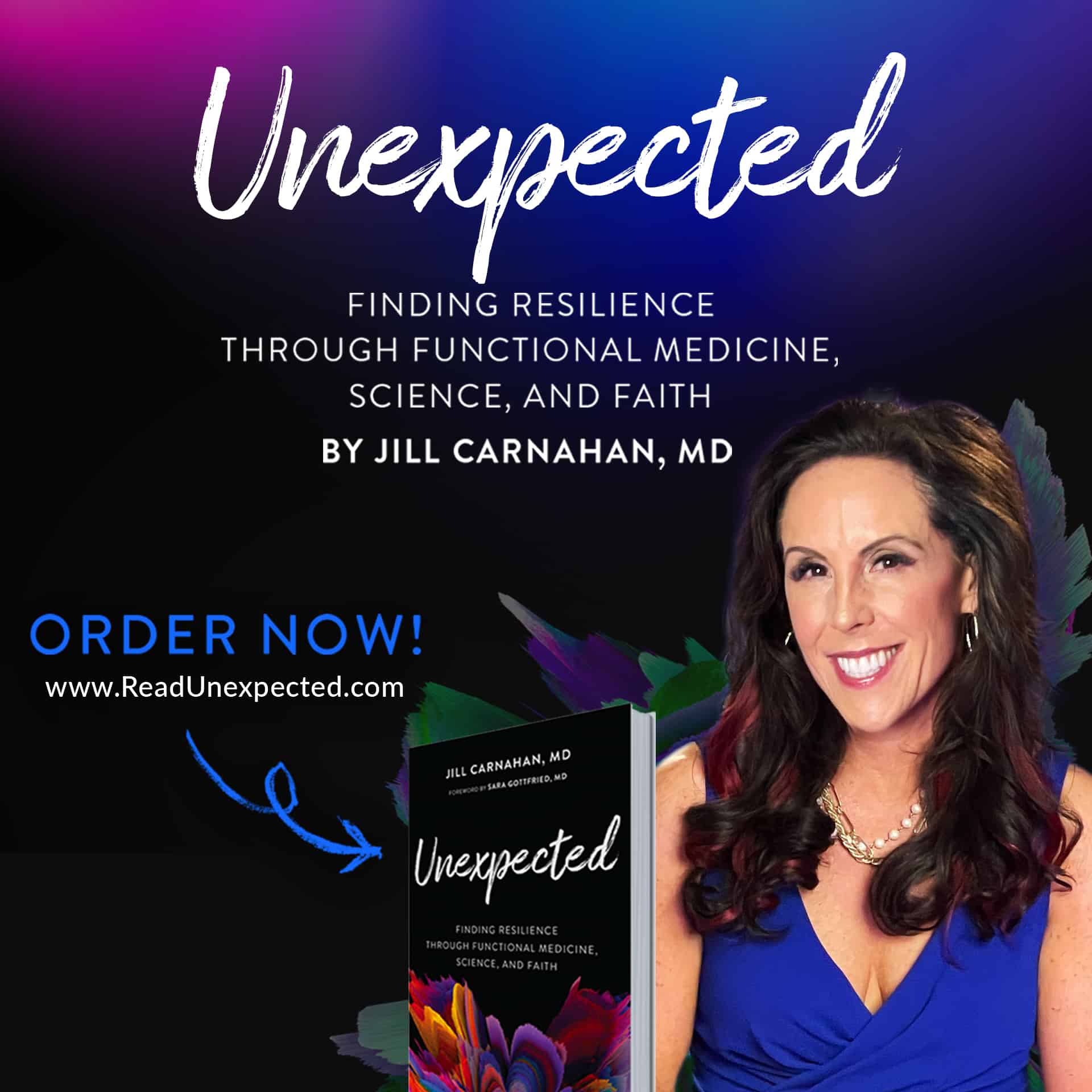


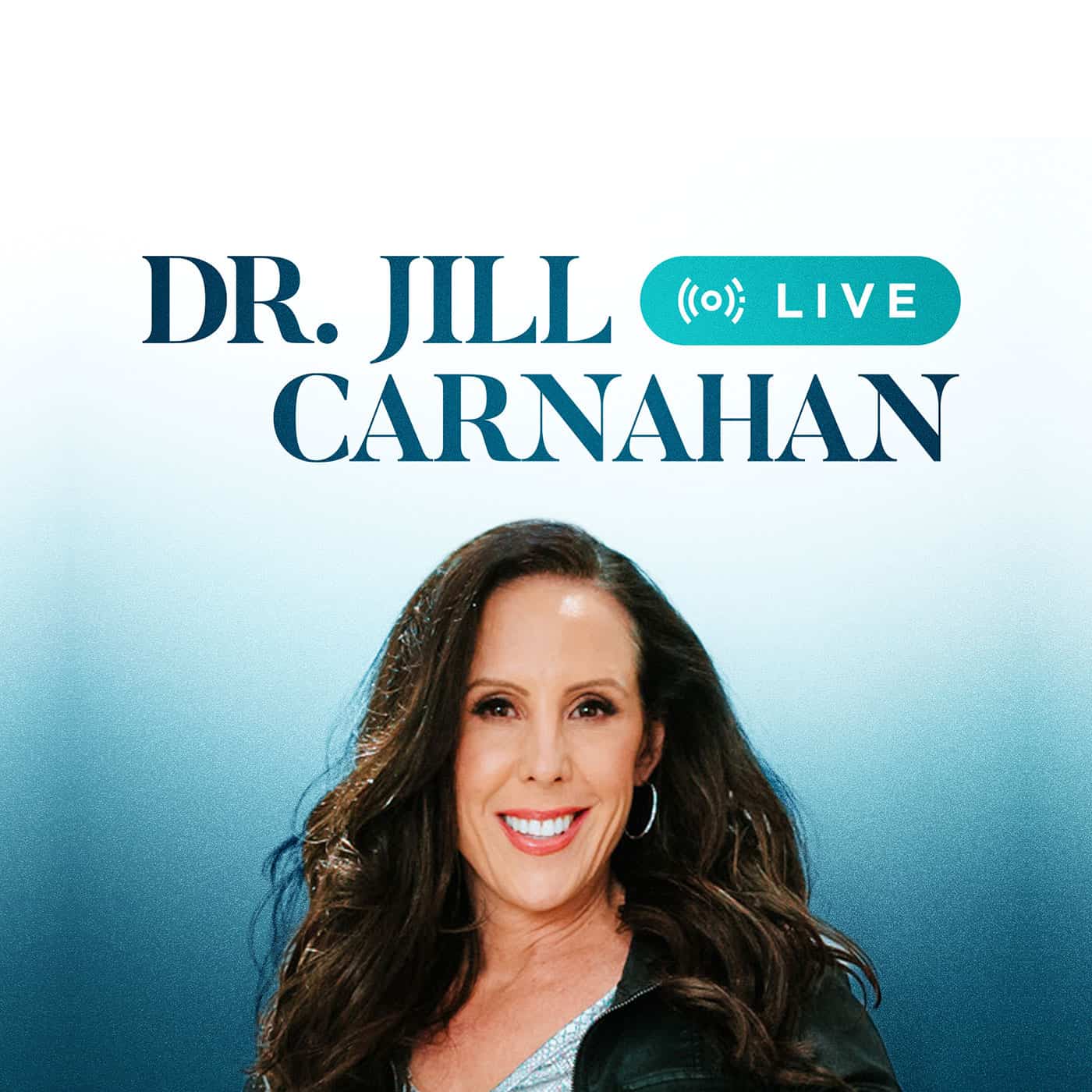
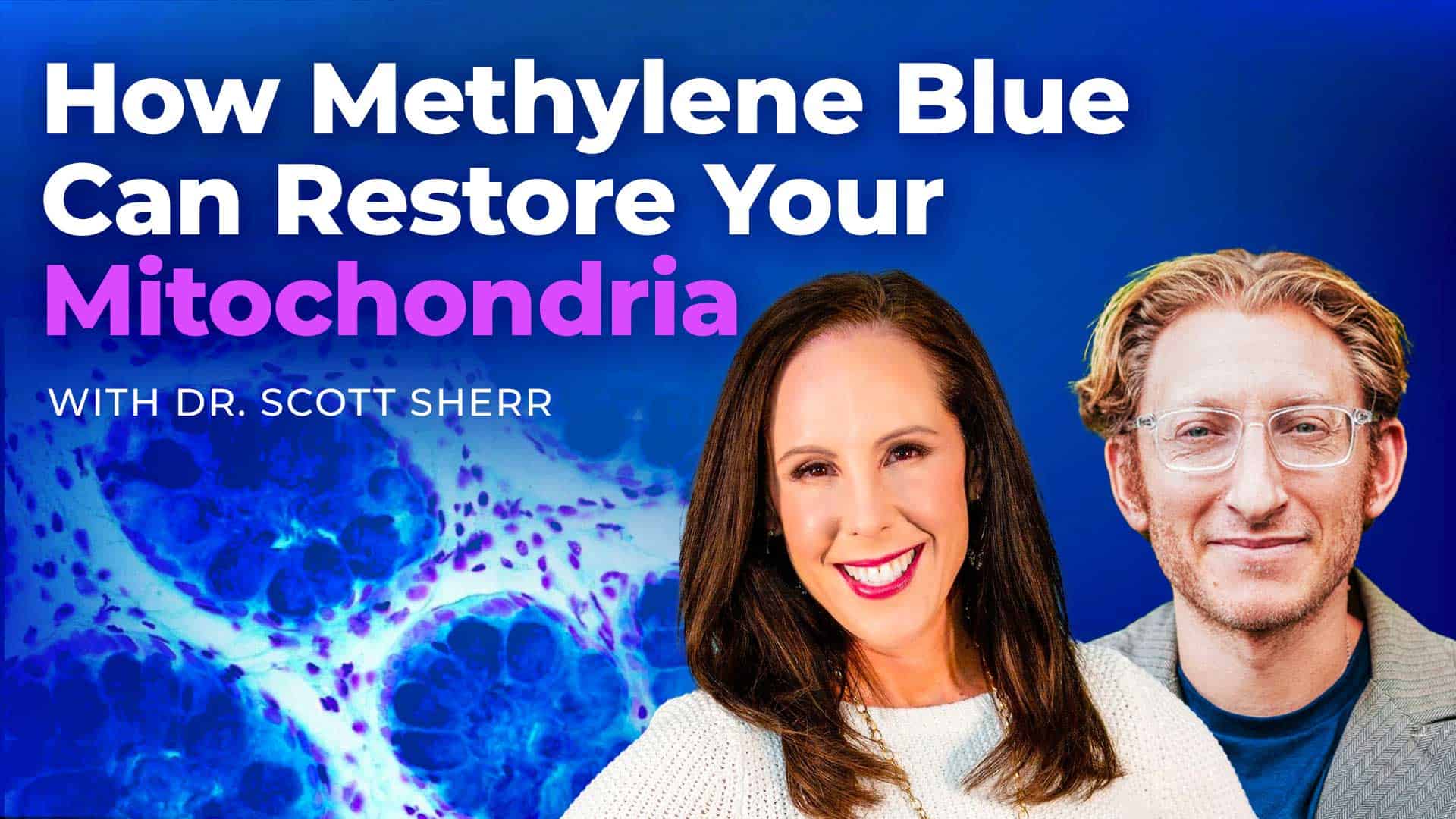
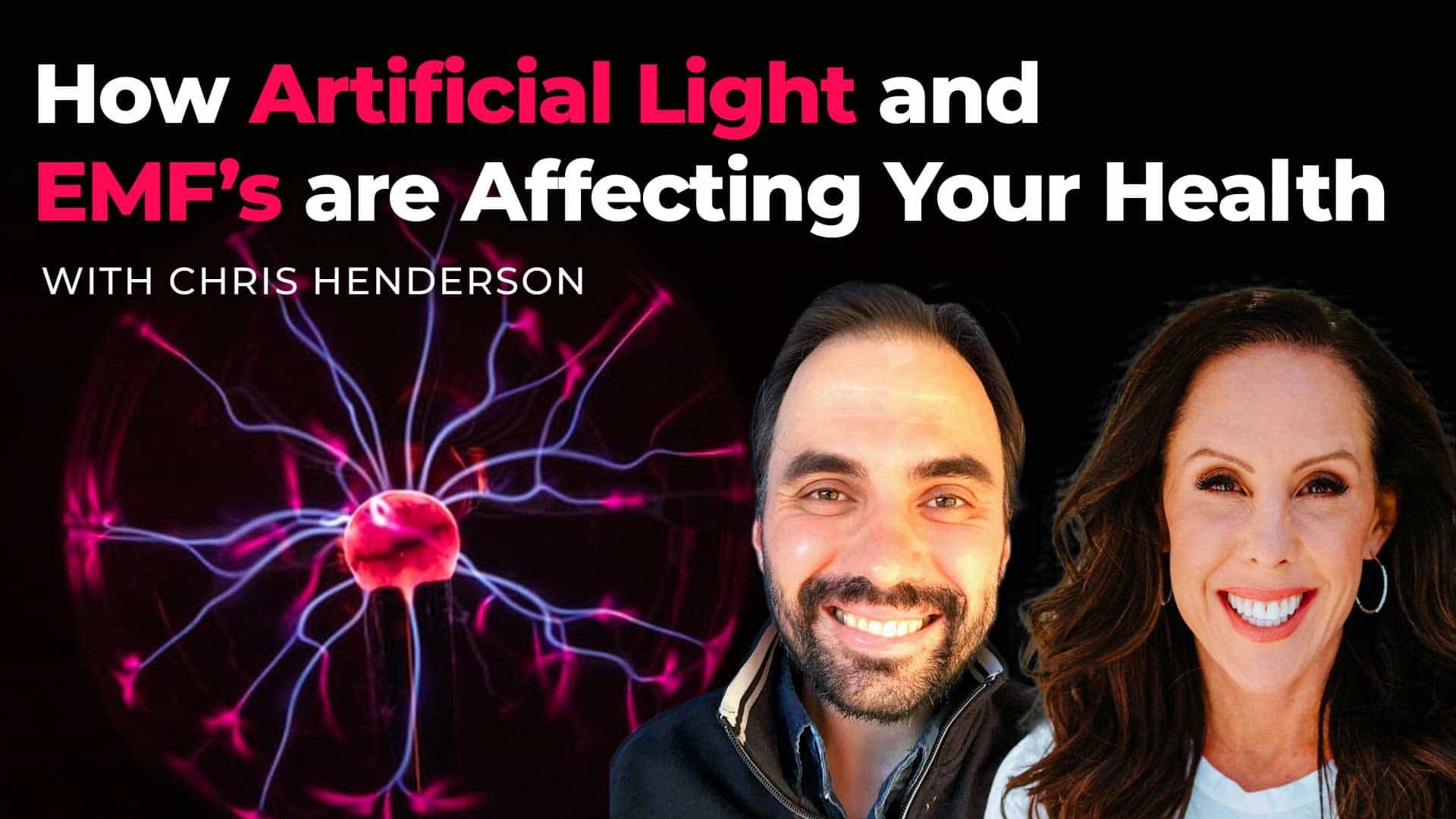
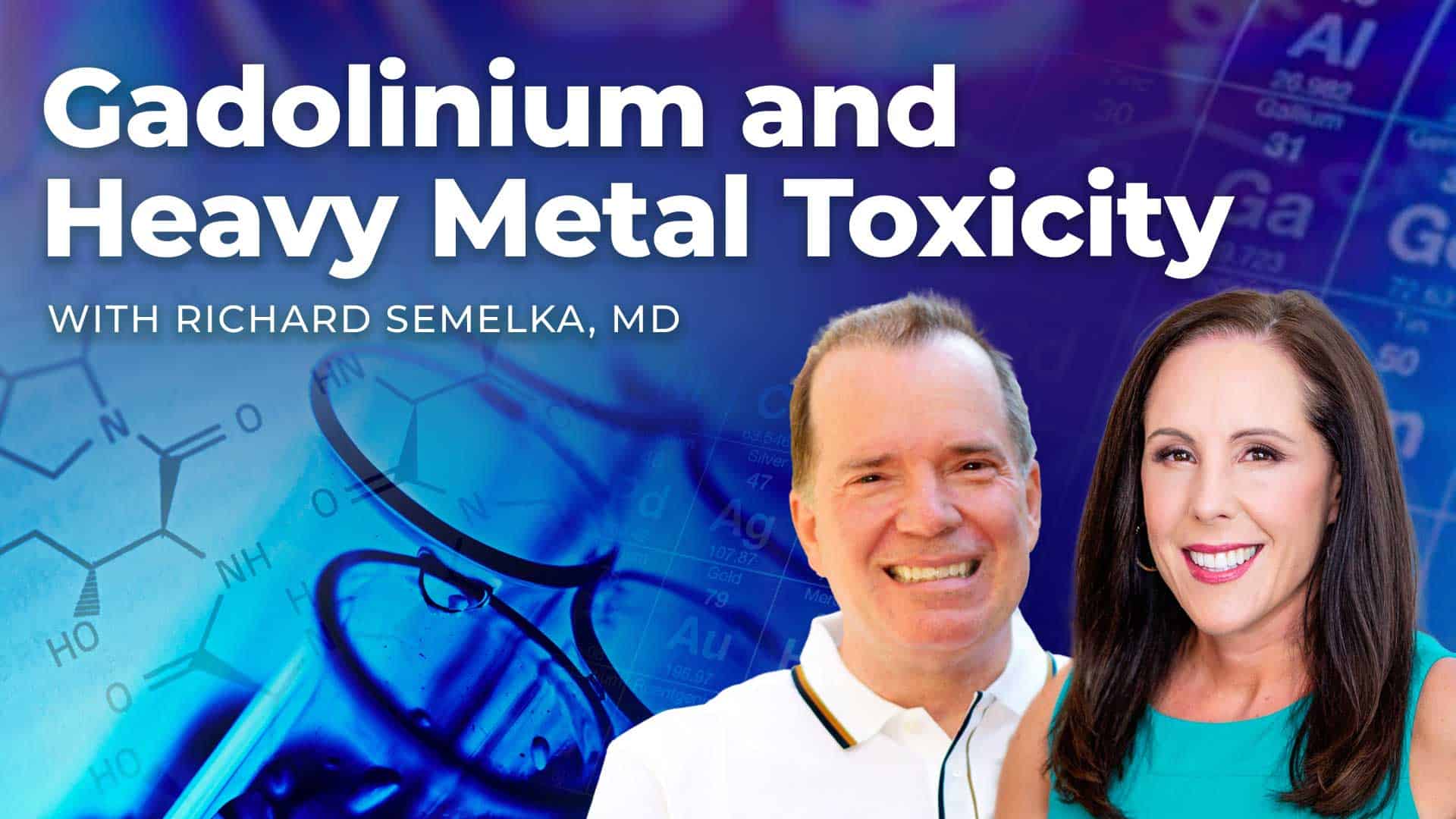




Share: